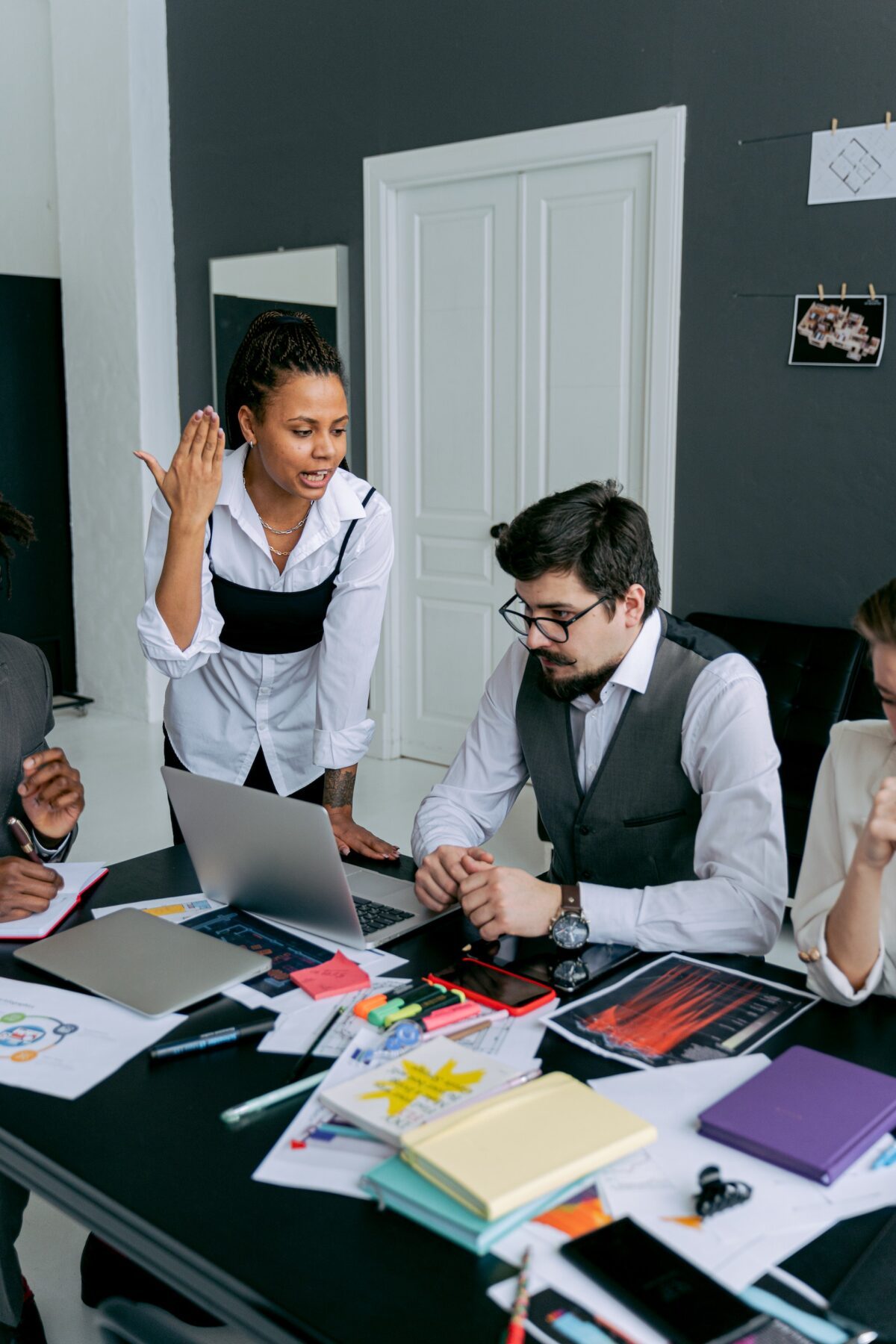Introduction
Let’s dive into the essential role of user experience UX and web accessibility.
Nowadays, it’s not just about having a website. It’s about making sure that everyone, including people with disabilities, can access and use it.
User experience (UX) plays a significant part in achieving web accessibility, which is essential to creating inclusive digital experiences for all. Thankfully, lawmakers ensure users with disabilities can fully engage and benefit from online content. As new regulations require companies to follow accessibility guidelines, disabled users can now easily navigate online.
But what does this have to do with user experience (UX)?
User experience (UX) refers to a person’s experience and awareness when engaging with a product, system, or service. This includes web content like websites, PDFs, and other digital content.
When we link user experience to web accessibility, we create inclusive digital experiences that promote:
- user satisfaction
- compliance with accessibility guidelines
- a more accessible and equitable online environment.
Once we realize user experience UX and web accessibility have a common goal, designers can implement both UX and accessibility best practices for ultimate user satisfaction.
What is User Experience (UX)?
User experience (UX) includes a user’s overall experience when interacting with a website or digital content. UX designers study, create, and refine factors like:
- usability
- visual design
- how information is structured
- how features on websites and mobile apps are used
UX designers use their skills to create experiences that are friendly and meaningful to users. This helps ensure the users feel satisfied with the product or service. To achieve this, UX designers take multiple steps to support user satisfaction while navigating online. This includes:
- Conducting user research to gain insights and understand their needs, behaviors, and preferences.
- Analyzing user behavior to identify patterns and trends, uncover pain points and frustrations, and enhance personalization.
- Regularly designing and refining interfaces to ensure that the final product meets user needs and provides an optimal user experience.
Web Accessibility: Making Websites Inclusive
Ensuring accessibility compliance is crucial for websites to provide equal access to all users. This includes users who are visually impaired, hard of hearing, have cognitive impairments, mobile impairments, or other forms of disability.
To stay updated with the latest accessibility laws and requirements, companies consistently check their websites and digital content. Often, they’ll refer to The Web Content Accessibility Guidelines (WCAG 2.0) and accessibility laws within their province.
To create a website and digital content that is inclusive to everyone, it’s important to understand the barriers that hinder accessibility. Such barriers include:
1. Limited alternative text (alt text)
Images without proper alternative text (alt text) can be a barrier for individuals who use screen readers or have visual impairments. As screen readers scan the page, they read the alt text so users can understand the content of the images.
2. Not enough color contrast
The low color contrast between text and background makes it difficult for users with visual impairments or color blindness to read the content clearly.
3. Lack of keyboard accessibility
Websites that are not navigable using a keyboard alone can be inaccessible to those with mobility impairments who rely on keyboard navigation or assistive technologies.
4. Non-user-friendly videos
Lack of captions, transcripts, or audio descriptions for videos and audio content can pose barriers for users with hearing impairments or those who rely on text-based content.
5. Poorly structured content
Content should be organized with headings, lists, and clear structure. Poorly structured content can make it challenging for those using screen readers or other assistive technologies to navigate and understand the information.
6. Confusing forms and controls
Confusing forms and controls can create barriers for individuals with cognitive impairments or those using assistive technologies. It becomes challenging to complete tasks or understand the purpose of what the forms and controls ask for.
7. Poorly tagged PDFs and documents
PDFs and other document formats that are not properly tagged can be difficult for screen readers to scan and decipher for individuals with visual impairments.
8. Lack of text resizing options
Websites that provide options to adjust the text size can make it easier for users with visual impairments or reading difficulties to read the content comfortably.
9. Time-limited content
Content with time limits, like carousels or session timeouts, can pose challenges for those who need more time to consume or interact with the content.
10. Complex navigation and layouts
Websites with complicated or confusing navigation menus, inconsistent layouts, or excessive clutter can make it challenging for users, especially those with cognitive disabilities, to find and access the desired information.
Website inclusion is essential in today’s society as we see more companies transitioning their businesses to websites and mobile apps. And understanding web accessibility helps tackle these barriers right from the start.
But understanding web accessibility isn’t enough.
How you provide a positive user experience with web-accessible features plays an important part too…,
The Link Between UX and Web Accessibility
Naturally, there’s a connection between UX and web accessibility.
When auditing your website and digital content for accessibility, there are a few standard features to implement:
- Clear and descriptive alternative text for images
- Sufficient color contrast
- Captions and transcripts for videos
The goal is to make sure disabled users can navigate the website without any difficulty.
Now, when auditing your website and digital content for user experience, a few standard features to implement include:
- A responsive design, accessible on desktops, tablets, and mobile devices
- Easy-to-understand navigation
- Clear and concise content
Of course, these are just a few examples of what UX designers typically implement on websites and digital content.
But the common goal here is to ensure that whoever utilizes the website or digital content can do so easily.
Now the question is, “What’s the link between UX and Accessibility?”
Because the common goal is to ensure user satisfaction, implementing a UX design that breaks down accessibility barriers creates the inclusive web content we’re striving to achieve.
Implement user-experience (UX) design to your website while following accessibility guidelines.
To create accessible websites and digital content, it’s crucial to follow accessibility guidelines and standards.
The most common accessibility guideline, The Web Content Accessibility Guidelines (WCAG), provides a comprehensive set of standards for web accessibility. WCAG describes how to implement features such as a page’s alt text, tags, content structure, and color contrast.
And just as accessibility guidelines have a list of requirements to adhere to, user-experience designers employ UX mapping.
UX mapping is a technique designers use to understand a user’s motivation, needs, and concerns. After gathering that intel, the UX designer then maps out what the user will experience on a page, such as:
- What colors or text will the user see?
- What order should be present the content in?
- What font is easiest to read?
Now take accessibility guidelines, like WCAG, and include them in UX mapping. You now have a more thorough approach that allows UX designers to achieve user satisfaction for everyone who visits the website-including disabled users.
The UX maps then become something like this:
- Do the colors still represent the brand while creating enough contrast for visually impaired users?
- Does the content have a hierarchical structure with clear tags that screen readers can understand and relay back to the user?
- Is the content well structured for keyboard-assistive technologies to navigate through?
You won’t know if your changes work without user testing and feedback
Of course, you need to test and get user feedback on the web content created.
User testing and collecting user feedback play a crucial role in validating and improving the accessibility of a website.
Conducting usability testing with disabled individuals helps identify barriers and usability issues that may have been overlooked during the design and development process.
It’s actually quite common for companies to rely on user feedback. User feedback provides excellent insights into the actual experiences of disabled users. It helps highlight areas for improvement and uncover accessibility challenges that may have been missed during the process.
Create a new standard by implementing web accessibility into your UX design
Creating inclusive and accessible websites has become a legal and ethical responsibility in today’s digital landscape. But it doesn’t stop there. As our digital world continues to evolve, creating inclusive and accessible websites and digital content must also provide exceptional user experiences.
By understanding the role of user experience (UX), web accessibility guidelines, and its barriers, your websites, and digital content can serve all users-including those with disabilities.
Does your website and digital content adhere to accessibility standards while providing a seamless UX design? Schedule a free consultation with Accessibility partners, and we’ll let you know if you’re implementing the new UX accessibility standard.







